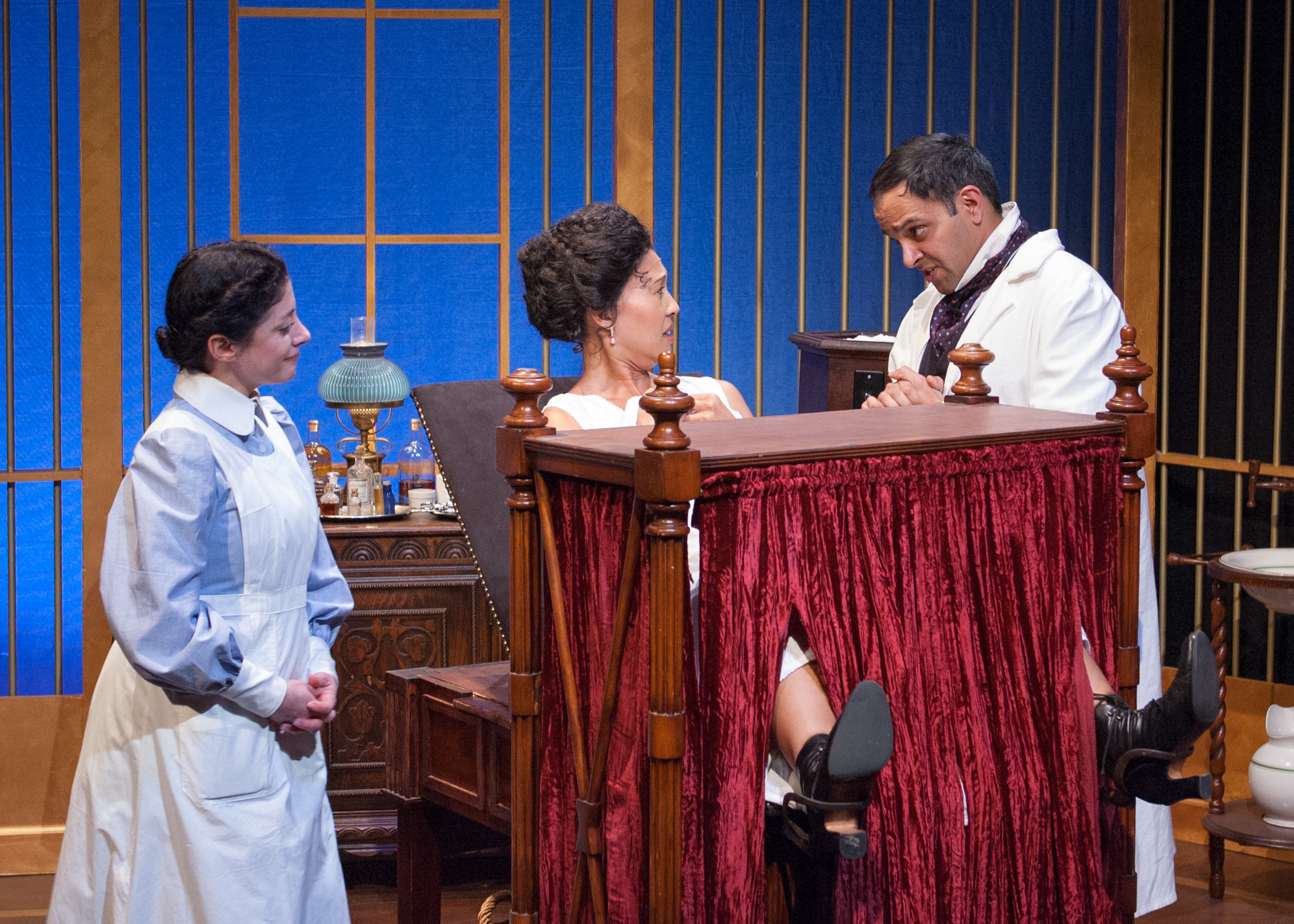Of the skills an actor might have, faking sex is among the most unique. Getting it on with a vibrator-wielding partner every day at work? Not something most of us encounter in our daily grind.
In Timeline Theatre’s In the Next Room: The Vibrator Play, the cast is tasked with faking what the play coyly calls “paroxysms,” eight shows a week. The Tony-nominated comedy about the early history of the vibrator follows the story of a 19th century physician who induced orgasms as treatment for female "hysteria."
For this production, intimacy designer Rachel Flesher knew she had to create an environment where the eroticism is founded in trust. We caught up with Flesher for a conversation about on-stage sex, intimacy, and the ins-and-outs of 19th century sex-toy prototypes.
About the electronic “vulva massage” therapy that Dr. Givings uses on his patients during In the Next Room. Is that a real antique vibrator? Does it actually work?
It’s a real 19th century device. Our props designer Vivian Knouse found it and she is awesome. It works. It vibrates, but not during the show. It looks like it’s turned on, but it’s not actually vibrating.
Where do you draw the line for onstage intimacy?
We are actors—so there’s no sex onstage. No penetration ever, for sure. We’re there to create and illusions and make it look like something more is going on.
The scenes in the operating theater have the doctor trying “electrical stimulation” on his patients in order to “release” the fluid he thinks is built up in the womb. How do you even begin to stage at that?
A big part of intimacy design is creating a safe space where artists can do brave work, so the first thing is protecting everyone’s emotional and physical safety. At every step, we’re asking the same two questions: "How does this make me feel?" and "How does this look to the audience?"
In the operating theater scenes, everyone had to be completely comfortable with where the device was going. We do "distance checks" regularly—it’s like the fight calls that often precede performances, only with intimacy. The actor getting the treatment always knows exactly how much space there is between her skin and the device, and precisely where her scene partner’s hands will be at every moment.
Everything we choreograph is intensely specific. We also have backup safety plans. If something goes wrong—if, for example, the curtain rod [shielding the actor's pelvis in the operating theater] breaks—we’ve got a Plan B that everyone is familiar with and comfortable with.
So how do you coach someone through a “paroxysm”?
We focus a lot on the feet and the hands and the breathing. The women take off their corsets for some of the treatments, so the breathing is automatically different. It’s suddenly deep, where before they could only take shallow breaths. When the doctor’s first patient, Mrs. Daldry, first comes in, there’s so much tightness in her body. Her first paroxysm is tight, contained. Toward the end of the play, she’s expressing full body movement, actually sitting up and leaning into the treatment.
What’s was the hardest thing physically about designing the intimacy in this show?
There’s [fake] snow falling during one scene, and it was really hard for the actors to figure out how to breathe without getting a nose full of snow.
How does one become an intimacy designer?
I started studying fight design. With fight and violence design, it’s the designer or choreographer’s job to keep the actors physically safe. It’s got to look dangerous, but feel safe and actually be safe. With intimacy design, it’s very similar. You’ve got to give actors an emotional space where they’re completely comfortable. Where they trust each other.
For this show, I did a lot of reading about 19th century gynecology. And about what the female brain looks during orgasm versus what the male brain looks like. They’re very different.
In the Next Room: The Vibrator Play, now through 12/16, $42.50-$56-60, Stage 773, timelinetheatre.com




